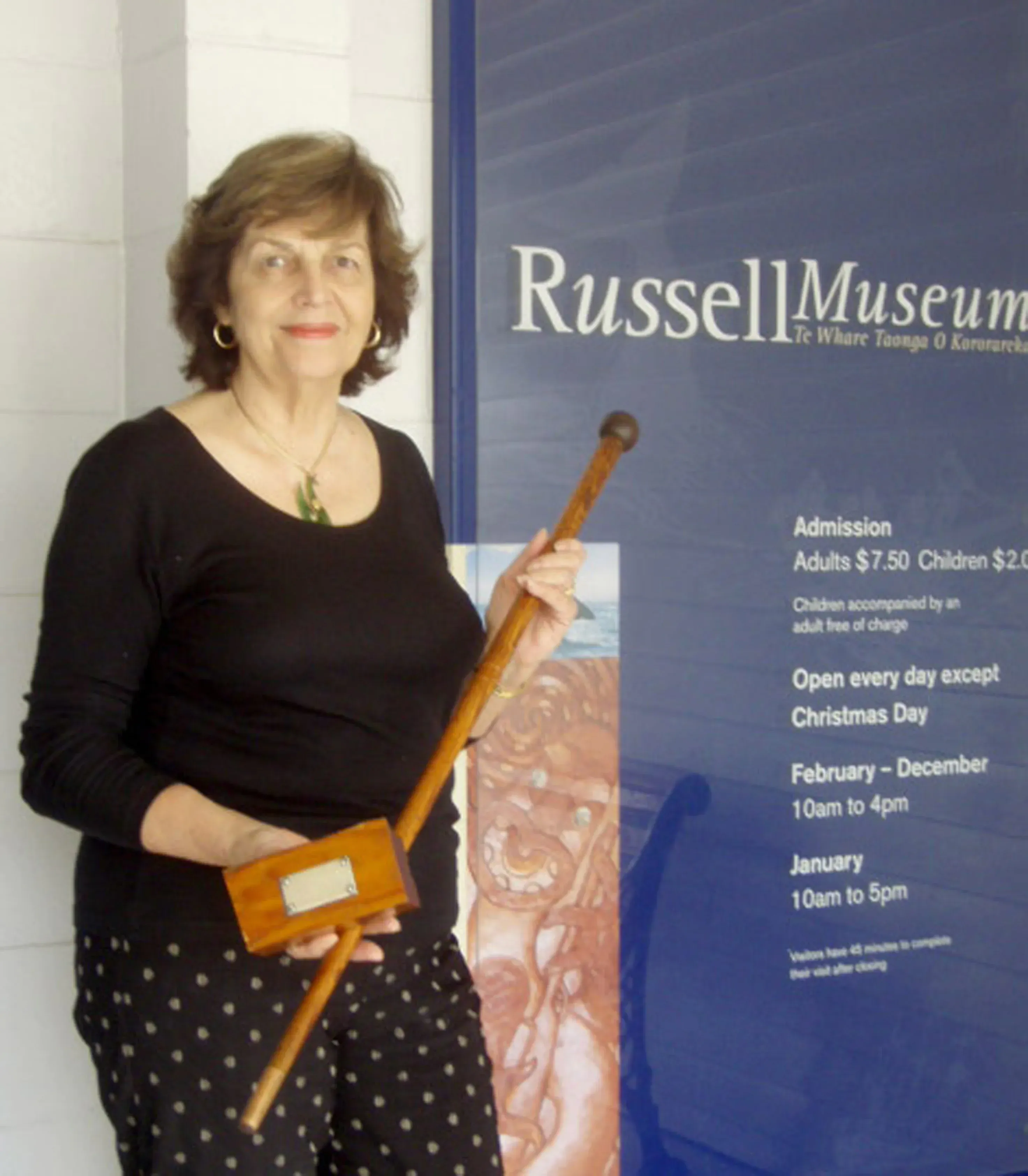Taonga Tuku Iho: Flagpole Relics Return
Written by

Two important historical artifacts have quietly returned home to Kororareka/Russell after long absences. Both pieces are relics of the last Maiki Hill flagpole to be felled prior to the sacking of the township on March 11th 1845.
One piece was the subject of sustained media interest earlier in the year, when doubts were raised as to its authenticity, and objections made to its proposed sale. It is a small piece of varnished Baltic pine, mounted with an engraved silver plaque, from the collection of the 5th Earl of Ranfurly who was New Zealand’s Governor General from 1897 to 1904.
The second piece is a walking stick, also fashioned from Baltic pine, and topped with a ball of grapeshot or canister, supposedly fired from the Hazard, and buried for years in the bank behind Christ Church. Russell Museum recently purchased both pieces from Auckland auction house Dunbar Sloane in a confidential agreement.
Various experts, including history professor and author Paul Moon had expressed the view that Ranfurly’s piece of flagpole was almost certainly a fake. Hone Heke’s great great-nephew David Rankin objected to his ancestor’s name being linked to a fake article and used for commercial gain. These views revealed the extent of the flagstaff’s shared history.
However evidence in the collection and archives of the Russell Museum suggested another possibility – that both pieces were genuine. A thorough search was made of all available resources, both primary and secondary. Comparisons were made with other existing relics of the same pole, both in the Russell Museum and other institutions. The flagstaff that both pieces apparently came from was the fourth to be erected on Maiki Hill and the last to be cut down by Ngapuhi rangatira Hone Heke. The apparent anomaly of this fourth flagstaff being of imported pine when all three of the preceding poles were probably constructed of native timber seemed to be the main reason for doubts about its authenticity.
Russell Museum’s investigations uncovered a likely explanation for this anomaly and enough evidence to approach Dunbar Sloane with confidence that the piece was a genuine souvenir; Dunbar Sloane Snr responded with a sincere desire to retain Ranfurly’s piece of the flagpole in New Zealand and an agreement was reached. A small piece of our past returned home; it will sit with other relics of the same pole, relics of an earlier pole and of a later one.
Never before have so many flagpole artifacts, including those from the last and present pole, Whakakotahitanga, been gathered together in one place. It is appropriate that the place is Kororareka/Russell. An exhibition is planned for later in the year, to celebrate this coming together— a coming together of the physical relics of those once potent and much challenged symbols of British authority, a coming together of the stories collected around them, and of the people who created, handed down or received and safeguarded those taonga for the benefit of those who would inherit them.
An article prepared by the museum presenting results of the flagstaff research will be published in the 2010 edition of Russell Review, an annual publication due out at Labour Weekend and available from the museum. Russell Museum/Te Whare Taonga o Kororareka thanks the people of Russell for their continued support, and especially the staff and trust Chairperson Lorraine Young who volunteer many hours of their own time to ensure that our museum lives up to its mission statement: To preserve the history & heritage of Russell/Kororareka and environs.